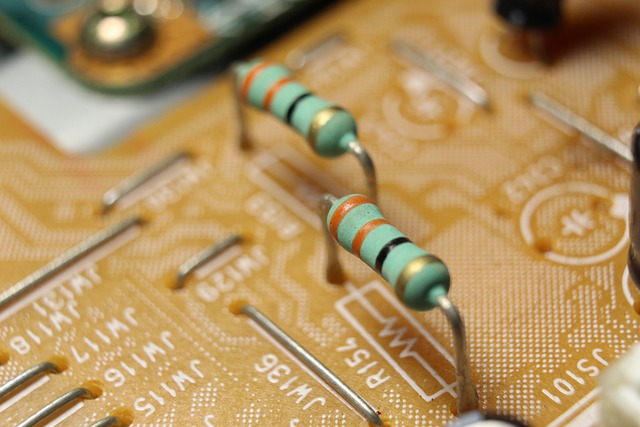Resistors

Resistors are electrical components that allow electric current to flow, but not as easily as a regular wire or conductor.
Resistors reduce the current flowing through the circuit by featuring a specific value of electrical resistance.
The function of a resistor, therefore, is to introduce a specific amount of resistance into a circuit wherever it is useful.
In other words, resistors add electrical resistance to a circuit.
In so doing, resistors can help control current and also generate specific voltages.
The relationship between resistance, current, and voltage is given by Ohm’s Law. Ohm’s Law defines resistance as the ratio between voltage across two points in a circuit and the current through the circuit:
R (ohms)= \frac{V(volts)}{I(amps)} Resistance is abbreviated by the letter R, voltage by V, and current by I.
We can rearrange Ohm’s Law to solve for current as follows:
I = \frac{V}{R}Let’s connect a 12 volt battery to a 1 ohm resistor. Current flows from the positive terminal of the battery, through the resistor, and back to the negative terminal of the battery.

We already know the battery’s rated voltage, which must be the same as the voltage across the resistor. Let’s use what we know to calculate the electric current through the circuit.
Ohm’s Law states that the current (I) is equal to the battery voltage (V) over the value of the resistor (R):
I = \frac{V_{battery}}{R} = \frac{12V}{1\Omega}=12\ AmpsIf we were to use a larger resistor of 15 Ohms, then we would reduce the current much more:
I = \frac{V_{battery}}{R} = \frac{12V}{15\Omega}=.8\ AmpsBy using a resistor with 15x more resistance, we reduced the current by 15x.
We can see that resistors reduce current, and larger resistors reduce current more.
They also produce a voltage ‘drop’ (i.e. difference in electric potential) that is proportional to the resistance:
V = I R
In the last two cases, we know that the voltage drop must be equal to the battery voltage, which happens to be 12 volts. That’s because on either side of the battery’s terminals, we will always measure the potential difference supplied by the battery. Batteries wouldn’t be very good voltage sources if this wasn’t the case.
However if two resistors are placed in series, each resistor will add to the total voltage drop, which would be equal to the battery voltage. The voltage drop across each resistor will depend on the ratio of the strength of each resistor.
Resistors are Useful
We have seen that resistors have the property of restricting current and producing a voltage
Resistors function by dissipating power:
P = I^2R
Resistors convert electrical energy into thermal energy (heat) as current passes through them. This is the most basic function of the resistor. This power dissipation is also known colloquially as an “I-squared R loss”.
Because resistors conduct inefficiently, they convert some of our electricity into heat.
Why would we want this?
There are actually a couple of reasons:
- Resistance doesn’t just waste energy; it also reduces current flow. Some resistance is always needed to prevent a short circuit. Even though conductors have a small amount of resistance, a higher level of resistance is usually needed to limit the current to safe levels. This is why it’s important to always use one resistor in series or in each branch of a parallel circuit.
- When we use specific values and configurations of resistors, we can tweak our circuit to take a given power source and output a specific current, or voltage levels, as needed. It’s a lot easier to use resistors to dial in the current we need than it is to add a new, highly specific battery every time we need a new current.
Return to…the Resistance!
Let’s return to the concept of electrical resistance for just a moment. Resistance is basically how conductive something is.
It’s important to remember that everything in a circuit (other than a superconductor) has some resistance. Every element (resistors, inductors, diodes, transistors) has resistance. The wires themselves have resistance. Even wires made of silver, which has the highest conductivity of any metal, has some resistance. It’s a low amount of resistance, but it’s still there.
So resistance is a constant factor in any circuit.
Potentiometers
A potentiometer is a type of resistor that can vary the resistance in a circuit, usually used to control the amount of voltage or current in a circuit.
A potentiometer consists of a resistive element, typically a carbon or metal film, and a wiper that can slide along the element, making contact at any point along its length.
By varying the position of the wiper, the path length of current inside the potentiometer can be adjusted, which in turn adjusts the amount of resistance in the circuit. This affects the output voltage or current in the circuit.
Potentiometers are commonly used in a variety of electronic devices, such as volume controls on audio equipment, dimmer switches for lighting, as well as as control elements for motor speed or position.